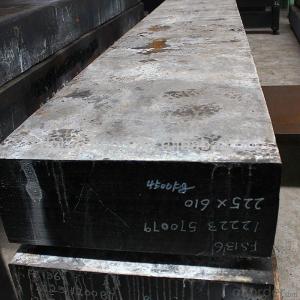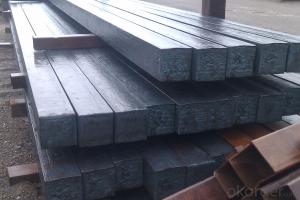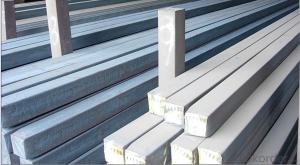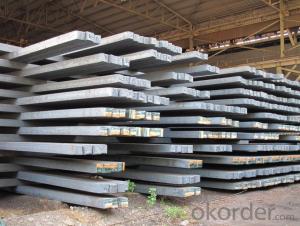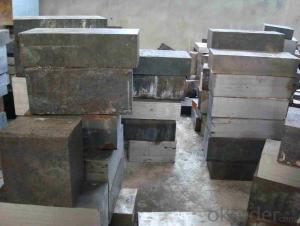Prime quality prepainted galvanized steel 700mm
- Loading Port:
- Tianjin
- Payment Terms:
- TT OR LC
- Min Order Qty:
- 100 m.t.
- Supply Capability:
- 10000 m.t./month
OKorder Service Pledge
OKorder Financial Service
You Might Also Like
Construction building material galvanized color prepainted cold
rolled steel coil
Prepainted steel sheet is coated with organic layer, which provides higher anti-corrosion property and
a longer lifespan than that of galvanized steel sheets.
The base metals for prepainted steel sheet consist of cold-rolled, HDG electro-galvanized and hot-dip
Alu-zinc coated. The finish coats of prepainted steel sheets can be classified into groups as follows:
polyester, silicon modified polyesters, polyvinylidene fluoride, high-durability polyester, etc
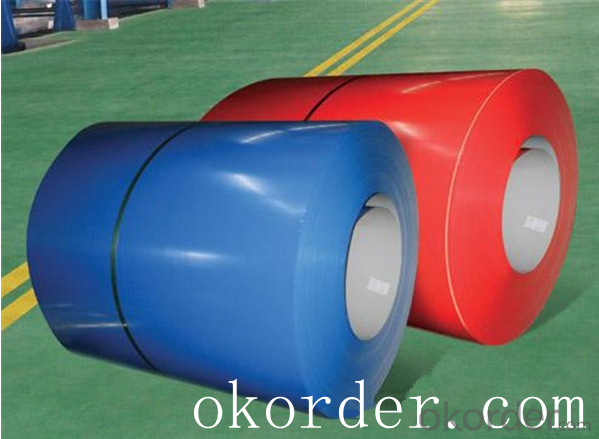
Standard and Grade :
Pre-paint galvanized steel coil | ||||
ASTM A755M-03 | EN10169:2006 | JISG 3312-2012 | ||
Commercial quality | CS | DX51D+Z | CGCC | |
Structure steel | SS GRADE 230 | S220GD+Z | CGC340 | |
SS GRADE 255 | S250GD+Z | CGC400 | ||
SS GRADE 275 | S280GD+Z | CGC440 | ||
SS GRADE 340 | S320GD+Z | CGC490 | ||
SS GRADE550 | S350GD+Z | CGC570 | ||
S550GD+Z | ||||
Application:
Outdoor | Roof, roof structure, surface sheet of balcony, frame of window, door of garage, rolled shutter door, booth, Persian blinds, cabana, etc |
Indoor | Door, isolater, frame of door, light steel structure of house, home electronic appliances, ect. |
Specifications
Commodity Name: Prepainted Galvanized Steel Coil
Standard: AISI, ASTM, DIN, GB, JIS
Grade: TDC52D+Z
Thickness 0.13-8.0mm
Width:600mm-1350mm
Zinc Coating:275g/m2
Polyester Coating Thickness:Top and Back coating thickness depend by Buyer Requirement.
Polyester Coating Type:2/2,1/2m,1/2.
Polyester Type: Polyester, silicone modified polyester, high durability polyester (HDP), polyvinylidene fluoride (PVDF)
Unit Roll Weight:5-20tons
Place of Origin Shanghai , China (Mainland)
Surface Treatment :Color Coated
Manufacture Progress:HRC-CRC-GALVANIZED-COLOR COATED
Application : Construction, electrical, transportation, steel plant, composite board plant, steel tile factory
Payment & Shipping Terms:T/T ,L/C, and FOB CHINA
Minimum Order Quantity: 25Tons
Packge Type: Moisture-proof paper inner,Steel outside,Bundle by steel rope.
Package in Container : Wood as a foot pad, wire rope reinforcement,PPGI steel coil tied together by steel rope.
- Q:What is the role of steel billets in the manufacturing of construction machinery?
- The exceptional strength and durability of steel billets make them crucial in the production of construction machinery. These semi-finished products, created from molten steel, can be shaped into various forms like bars, rods, or sheets, depending on the specific machinery being manufactured. The ability of steel billets to withstand heavy loads and extreme conditions is one of the primary reasons for their use in the construction machinery industry. Machinery like excavators, bulldozers, cranes, and loaders experience intense stress and pressure during operation. With their high-quality steel composition, steel billets provide the necessary structural integrity and resistance to deformation, ensuring the machinery can handle demanding tasks without compromising safety or performance. Additionally, steel billets offer excellent weldability, an essential characteristic in the manufacturing process of construction machinery. Welding is often required to join different components together, and the use of steel billets guarantees strong and reliable welds, contributing to the overall stability and longevity of the machinery. Furthermore, steel billets can be easily machined and formed into complex shapes, allowing for the production of intricate parts and components needed for construction machinery. This versatility empowers manufacturers to design and fabricate machinery with precise specifications, enhancing their functionality and efficiency on the job site. Moreover, steel billets are known for their resistance to corrosion and rust, making them ideal for construction machinery exposed to harsh environmental conditions like moisture, chemicals, and abrasive materials. This resistance ensures the longevity of the machinery, reducing maintenance costs and downtime. In conclusion, the strength, weldability, machinability, and resistance to corrosion of steel billets make them indispensable in the manufacturing of construction machinery. By incorporating steel billets into the production process, manufacturers can create robust and reliable machinery that can withstand heavy loads, extreme conditions, and perform efficiently in the construction industry.
- Q:What is the role of steel billets in the manufacturing of machinery?
- Steel billets play a crucial role in the manufacturing of machinery as they serve as the raw material for creating various machine components. These billets are heated, shaped, and then further processed to produce different parts such as gears, shafts, and structural frames. The high strength and durability of steel make it an ideal material for machinery, ensuring the final products are capable of withstanding heavy loads and harsh conditions.
- Q:What are the main factors affecting the dimensional tolerances of steel billets?
- The main factors affecting the dimensional tolerances of steel billets include the quality of the raw material used, the manufacturing process employed, and the precision of the equipment and tools used during production. Additionally, environmental conditions such as temperature and humidity can also impact the dimensional tolerances of steel billets.
- Q:Are steel billets used in the production of musical instruments?
- Yes, steel billets are commonly used in the production of musical instruments. They are often used to create various components such as keys, valves, and rods, which are essential parts of instruments like saxophones, trumpets, and trombones.
- Q:What is the role of steel billets in the manufacturing of wind turbines?
- Steel billets play a crucial role in the manufacturing of wind turbines as they are used as the raw material for producing various components of the turbine, such as tower sections, base frames, and rotor hubs. The high strength and durability of steel make it an ideal choice for withstanding the demanding operating conditions of wind turbines, including strong winds and extreme weather. The billets are melted, cast, and then further processed to create these components, ensuring the structural integrity and longevity of the turbines.
- Q:What are the safety precautions to be followed while handling steel billets?
- When handling steel billets, it is important to follow several safety precautions to prevent accidents and injuries. Some of the key safety precautions to be followed include: 1. Personal Protective Equipment (PPE): Always wear appropriate PPE such as safety goggles, gloves, and steel-toed boots to protect yourself from potential hazards like sharp edges, flying debris, and heavy objects. 2. Lifting and Handling Techniques: Use proper lifting techniques, such as bending your knees and lifting with your legs, to avoid straining your back or causing musculoskeletal injuries. When moving steel billets, use equipment like forklifts, cranes, or lifting slings to ensure safe and secure handling. 3. Secure Stacking: When storing or stacking steel billets, ensure they are stacked securely and evenly to prevent them from toppling over. Use appropriate storage equipment, such as pallets or racks, and ensure they are in good condition and capable of supporting the weight of the billets. 4. Slips, Trips, and Falls: Keep the area around steel billets clean and free from any obstacles or tripping hazards. Use anti-slip mats or flooring in areas prone to spills or wet conditions. Be cautious of any oil or grease on the floor, as it can create slippery surfaces. 5. Fire Safety: Steel billets can produce sparks when being handled, so it is important to ensure a fire-safe environment. Keep the area clear of flammable materials and have fire extinguishers readily available in case of emergencies. 6. Communication and Training: Communicate with your coworkers about the movement of steel billets to avoid collisions or accidents. Additionally, ensure that all employees receive proper training on safe handling practices and understand the potential risks associated with steel billets. 7. Regular Maintenance and Inspections: Regularly inspect equipment, such as forklifts or lifting slings, to ensure they are in good working condition. Report any damages or malfunctions immediately and do not use faulty equipment. By following these safety precautions, you can minimize the risk of accidents, injuries, and damage to both yourself and the steel billets. It is crucial to prioritize safety at all times when handling steel billets.
- Q:What are the different forming processes used for steel billets?
- The different forming processes used for steel billets include hot rolling, cold rolling, extrusion, forging, and casting.
- Q:What is the typical size and shape of steel billets?
- Steel billets typically have a rectangular or square shape and come in various sizes. The most common sizes range from 100mm x 100mm to 300mm x 300mm, with lengths typically ranging from 3 meters to 12 meters. However, the size and shape of steel billets can vary depending on the specific requirements of the steel production process and the intended use of the billets.
- Q:How are steel billets used in the construction industry?
- The construction industry relies heavily on steel billets, which are essential for supporting and enhancing the structural integrity of buildings and infrastructure. These semi-finished steel products are heated and shaped to meet the specific requirements of construction projects. One important use of steel billets is in the production of rebar, which provides strength and stability to concrete structures. By heating and rolling the billets into long, cylindrical shapes, reinforcement bars are created. These bars are embedded within the concrete, increasing its tensile strength and preventing cracks or structural failure. Steel billets are also used to manufacture structural steel sections, including beams, columns, and channels. These sections are crucial for constructing the framework of a building and providing support and load-bearing capacity. Depending on the project's specifications, steel billets are heated and rolled into various shapes and sizes. These sections are then assembled to ensure the stability and durability of the building. In addition to rebar and structural steel sections, steel billets are utilized in the production of other construction components. This includes steel plates, pipes, tubes, and wires, which serve different purposes in the construction industry. Steel plates reinforce building foundations, while steel pipes and tubes are used for plumbing, drainage, and HVAC systems. Steel wires strengthen concrete structures and act as reinforcement in precast concrete elements. Overall, steel billets are crucial in the construction industry as they provide the necessary raw material for producing reinforcing bars, structural steel sections, and other construction components. Their strength and versatility make them essential for ensuring the safety, stability, and longevity of buildings and infrastructure projects.
- Q:What is the role of steel billets in the manufacturing of automotive frames?
- The manufacturing of automotive frames heavily relies on steel billets, which fulfill a crucial role. These billets are essentially semi-finished steel products utilized as raw material across various industrial processes. In the automotive sector, steel billets undergo a series of manufacturing steps to become automotive frames. Primarily, steel billets are chosen for their exceptional strength and durability. Their composition and mechanical properties make them ideal for supporting the weight and structural integrity of automotive frames. These frames need to endure diverse loads, shocks, and vibrations, which is where steel billets provide the necessary strength and stability. The manufacturing process commences with heating the steel billets to a specific temperature known as the forging temperature. At this temperature, the billets become pliable and can be easily shaped and manipulated. Subsequently, they are introduced into a forging press or machine, where immense pressure is employed to mold them into the desired shape of the automotive frame. Following the forging process, the frames commonly undergo heat treatment to enhance their mechanical properties and performance. This process involves heating the frames to a specific temperature and then rapidly or gradually cooling them to achieve the desired hardness, strength, and toughness. Heat treatment also aids in relieving internal stresses and enhancing the overall structural integrity of the automotive frames. Once the frames are forged and heat-treated, they go through various finishing processes, such as machining, welding, and surface treatment. Machining is executed to eliminate excess material and refine the frame's dimensions, ensuring precise specifications are met. Welding is employed to join different components of the frame together, guaranteeing their structural integrity. Additionally, surface treatments like painting or galvanizing are administered to safeguard the frames from corrosion and enhance their appearance. In summary, the indispensability of steel billets in the manufacturing of automotive frames arises from their remarkable strength, durability, and malleability. They serve as the foundation for creating robust and dependable structures capable of withstanding the demands of the automotive industry. Through processes such as forging, heat treatment, and finishing, steel billets are transformed into automotive frames that constitute the backbone of vehicles, ensuring their safety and performance on the road.
1. Manufacturer Overview |
|
|---|---|
| Location | |
| Year Established | |
| Annual Output Value | |
| Main Markets | |
| Company Certifications | |
2. Manufacturer Certificates |
|
|---|---|
| a) Certification Name | |
| Range | |
| Reference | |
| Validity Period | |
3. Manufacturer Capability |
|
|---|---|
| a)Trade Capacity | |
| Nearest Port | |
| Export Percentage | |
| No.of Employees in Trade Department | |
| Language Spoken: | |
| b)Factory Information | |
| Factory Size: | |
| No. of Production Lines | |
| Contract Manufacturing | |
| Product Price Range | |
Send your message to us
Prime quality prepainted galvanized steel 700mm
- Loading Port:
- Tianjin
- Payment Terms:
- TT OR LC
- Min Order Qty:
- 100 m.t.
- Supply Capability:
- 10000 m.t./month
OKorder Service Pledge
OKorder Financial Service
Similar products
New products
Hot products
Related keywords
